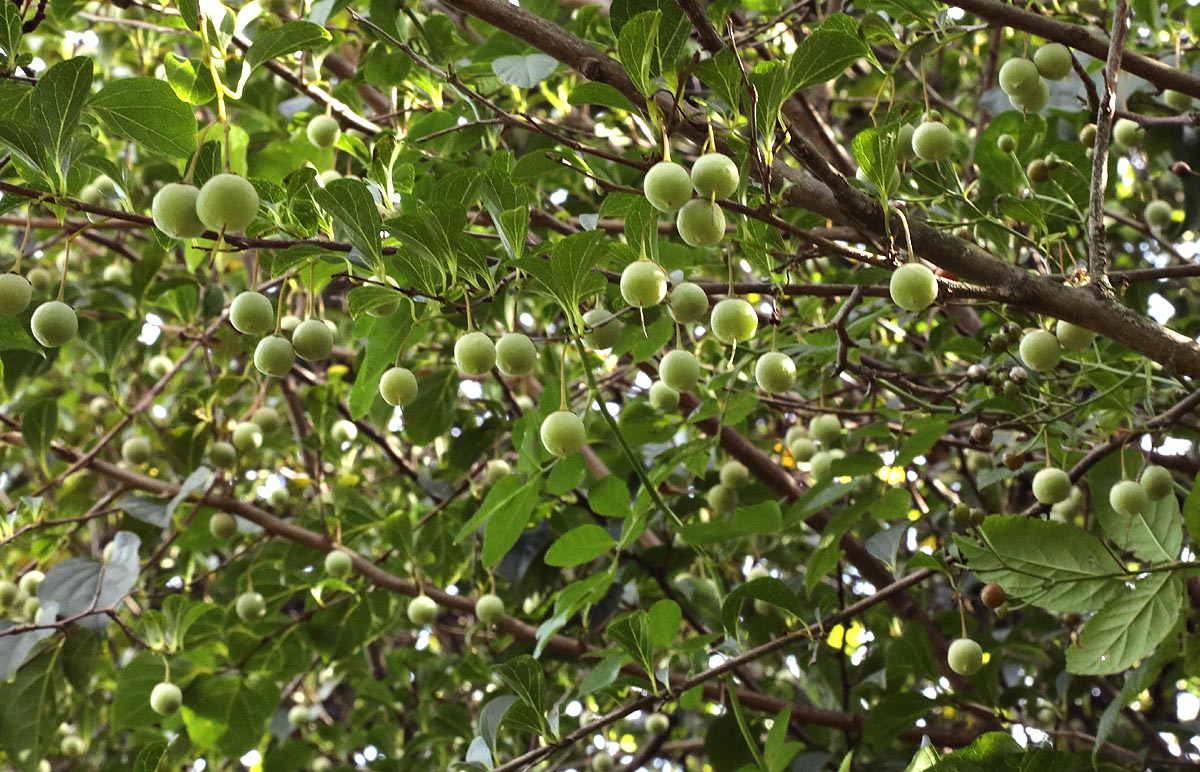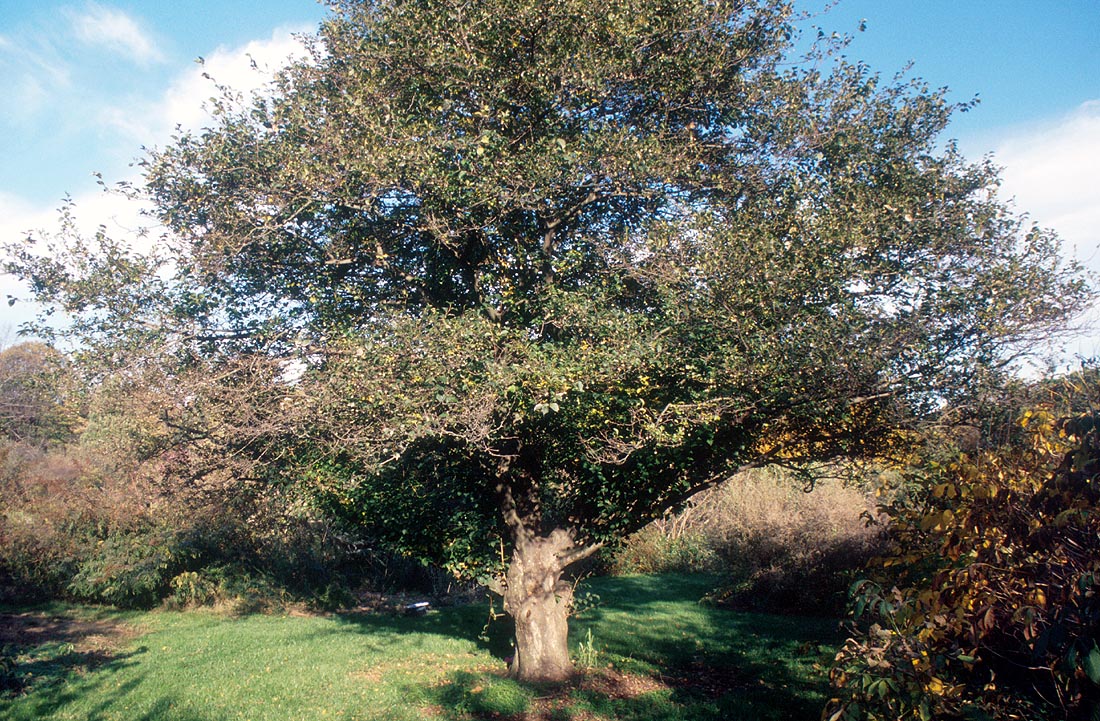A truly beautify medium sized tree for a open space in a garden where its shape and features can be most appreciated. This tree has masses of beautify white flowers in late spring to early summer that attract bees, butterflies and humming birds for their strong nectar and humans for its intoxicating fragrance. Flowers are followed by olive green globe like fruits about the size of a large pea that hang beneath all the branches like Christmas decorations. When autumn arrives the leaves turn bright yellow to orange providing interest for almost all of the year. The shape of the tree with delicate arching branches make it attractive even in winter when there are no leaves. Takes little or no maintenance once growing provided it has sunshine and well drain non alkaline soil. Takes a little work to get the seeds started as they need stratification first but its worth it.
The most attractive feature of the tree is the multitude of white flowers produces in late spring to early summer. Each flower consists of five petals arranged in a star shape that open wide to show a cluster of bright yellow stamens in the center and are extremely fragrant. Flowers are born on long stems in groups arising from almost every leaf node on the tree making a multitude of white blooms covering the underside of the branches and giving this tree its name as it appears the undersides are covered in snow. The fragrance can be intoxicating and travel for long distances from the tree.
Flowers are followed by small oval shaped green fruits about 0.5 inches (1.2 cm) in diameter with a small protrusion at the tip. They are attached to the long flower stems by wide caps of the carpal that now look like tiny caps and add interest to the tree. The fruits finally turn brown as they mature but can stay attached to the tree throughout the winter months.
Most then suggest a warm stratification period of 90 days first. So place the tray or bag somewhere in your home for this period of time. They don't need to have light at this stage just label it clearly, place it somewhere it wont be disturbed and remember where you put it. After the period of warm stratification it needs cold so this is when its placed either in your refrigerator or in a cold garage or shed for the rest of the winter months. Most sources suggest 120 days but as few as 60-90 will usually yield good results. Keep an eye on the bag/seed tray to ensure it does not dry out and to see if there are any early germinators. Once this period is over treat like any other seed tray, seeds should sprout in springtime.
See our Stratification Instructions for more details on this method.
If using the baggie method plant seeds in large cell trays or small pots after stratification time is complete and treat like any other seed. Once germinated these seeds grow rapidly and produce deep tap roots so ensure you are using a deep enough pot to accommodate them. Transplant to deep pots as soon as possible juice or milk cartons make excellent tree pots as they are deep and biodegradable.
For zone 5 full sun in semi sheltered position, trees are damaged at temperatures of -20 degrees F ( -28C). In zones 6-7a full sun in open area is suitable although large open expanses are not recommended in zone 6, so don't plant it in the middle of an open field, but for most personal gardens and small parks its ideal in open location in full sun.
Zone 7b and 8 some partial shade is required especially from summer heat. Place in a location where the breezes will help to keep the tree cool. This plant is from the mountains of Japan so its not use to high heat.
Likes a well drained soil that has good amount of organic material so it retains moisture without being wet. Does not like wet soils and does very poorly in high alkaline ones. If your soil is strongly alkaline its not recommended you grow this unless a great deal of soil amendment is undertaken.
Snowbells have a moderate growth rate so ensure you allow plenty of space for it to grow. It can spread to 30 ft diameter (9.1m).
Not drought tolerant needs reasonable water so if there is a long drought it will need extra water to survive.
Fertilize using liquid fertilizer around outer roots, not up against the trunk but around the trees drip line, once or twice a year. If tree has enough organic material it may not need fertilizing, adding a layer of mulch each year will be beneficial, just don't get close to the trunk. Will need more fertilizer on poor soils with no amendment.
Pruning. Should be minimal just to open up branches or remove any damaged wood. For the most part snowbells grow easily in open structure and don't need much help.
The wood is very hard and commonly used to make ribbing in umbrellas as well as walking sticks, toys and chess sets.
Seeds were mashed and used to make insecticide, the resin from the tree was also used for this purpose but using the seeds is most likely easier to collect.
It is unsure if the whole seed contains these properties or just the seed skins (the green portion that sloughs off when the seed is ripe) as this portion it was also used by fishermen, who would powder it and mix with ash then throw it into water to stun the fish which float to the surface for easy collection. More recent research as confirmed this cytotoxic activity but killing shrimp. This compound is a saponin and is also used to make soap for clothes washing.
The beauty of this tree in both shape, flower and fragrance have embedded it deeply into Japanese culture and the tree is often depicted in Japanese art, poetry and well as with religious and ceremonial practices








